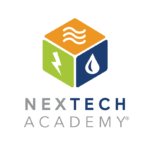Training is a part of the employee learning experience and company alignment process that never ends. Specifically speaking, training for technicians in the residential home service trades has always been a very hands-on learning experience since the invention of plumbing in ancient civilizations, Carrier’s invention of the modern air conditioning system in 1902, and the spread of electrical-powered homes in the early 1900s. Training and learning will continuously evolve as technology evolves. “Learning is fundamentally a social process, something that takes place between people and not only in people; and, second, as an extension of this, the learning culture or environment is decisive for the learning,” wrote Knud Illeris in The Fundamentals of Workplace Learning: Understanding How People Learn In The Working Life.
Training Then
Historically, the skills and tasks for the trades were taught and learned by seeing a veteran perform the task, then trying to replicate it. On-the-job training commonly covers the job, the service, and the component being worked on at a specific moment. Apprentices can be mentored and coached by a master technician who can supervise and advise them. This relationship transfers the knowledge and craftsmanship of the master technician onto the apprentices. Where there are gaps in the apprentices’ understanding, the mentor can provide the missing information to ensure competency.
Traditional hands-on mentorship learning is important with building relationships, but without a laid-out curriculum, there is no logic or sequence of learning holistically or about how the complete system works. Air conditioning units are more than a box with refrigerants running through it, plumbing systems are more than toilets and sinks connected to pipes through the wall, and electricity is more than on and off switches and light bulbs. Each fixture is made up of individual component and each component is connected to a bigger system throughout the whole house.
Training Today
Traditional methods of training have not changed, it has only been enhanced with time and technology. According to the 2019 Brandon Hall Study, much of the training for the home residential industry and across all other industries are still instructor-led, 94% of training by organizations to be exact. Some of the biggest challenges to training are accessibility and mass training. Since 1999 and the early 2000s, the term eLearning was coined, and companies began training their employees online. With technology and readily available mobile devices, training can be accessed anytime and anyplace by students. Through video and lab simulations, apprentices can practice and learn new skillsets without the liability of working through an actual service call. Many industries utilizing online vocational training can automatically track their employees’ progress and completion status through their learning experience.
Instructor-led training is not going away. Instead, hybrid or blended learning, are keywords for how training is currently being delivered. It is a combination of instructor-led and web-based learning to deliver content to users. The implementation of media enhances the engagement and retention of information by supplementing the standard textbooks.
There are many exciting buzzwords around virtual reality (VR) and augmented reality (AR), but the practical reality of them at this current state is that it is still too expensive to develop and implement. Many individual set-ups for VR can cost anywhere from $400 to $2000 to purchase, excluding the courses and software. The implementation costs can quickly become exponentially expensive to support for whole teams or departments. Another barrier for many companies fully committing to early adaptions of eLearning is the opinion and comfort of doing things like how-it-has-always-been-done. The discomfort and lack of trust in eLearning mean that there is a lack of interest, therefore a lack of funding in both implementation and development.
Training Tomorrow
Virtual reality and augmented reality are the future of vocational training programs. Period. Both VR and AR are safe, minimize long-term costs, and mitigate liability for everyone. Training can be done on a toxic or hazardous environment or system without harm. Should there be an accident or destruction to the simulated property, it can simply be reset in the VR environment. The initial cost to purchase and implement the VR and AR lab may be substantial for many companies, but the experience can be reproduced repeatedly for the employees; one VR set-up and one course can be used to teach thousands of users. Regarding liability, like safety, rather than damaging a million-dollar house, everything is simulated so potential damage costs are at zero.
The good news is technology becomes more affordable through time. Both VR and AR are relatively new technology implemented in the job training area. Currently, the most affordable portable VR headset costs $400 and brings hope for other technology like it to be more affordable and wireless. And being wireless is important because it can save over $1000 by not requiring a graphic-demanding computer to connect to. As interest and development are invested in supporting training, VR, and AR, more resources would be available as well.
Tl;Dr: Training is evolving. Companies must evolve too.
Sources:
https://www.talentlms.com/elearning/history-of-elearning
https://www.efrontlearning.com/blog/2013/08/a-brief-history-of-elearning-infographic.html
https://theplumber.com/plumbing-history/
https://www.carrier.com/carrier/en/worldwide/about/history/
https://www.instituteforenergyresearch.org/history-electricity/
The Fundamentals of Workplace Learning: Understanding How People Learn In The Working Life


